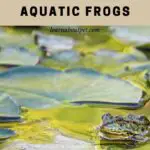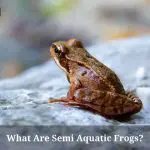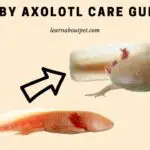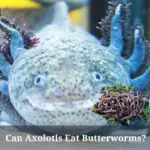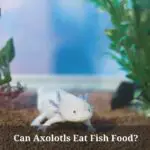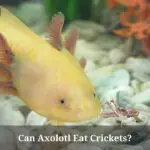The axolotl is an aquatic pet that is hardy and durable creatures. Caring for them must know several things that must be considered to stay healthy and live according to their life expectancy. One of the main things to pay attention to is diet.
Is your Axolotl not eating? The possibility that often occurs when an axolotl refuses to eat is bad water conditions that stress the Axolotl. If these bad water conditions are not addressed, stress will lead to disease, and when they don’t eat, their body condition worsens.
There are several conditions where Axolotl not eating, which can be a problem for their development and body condition. You need to know, and there are still many possibilities why Axolotl doesn’t want to eat. Learn in this article to the end.
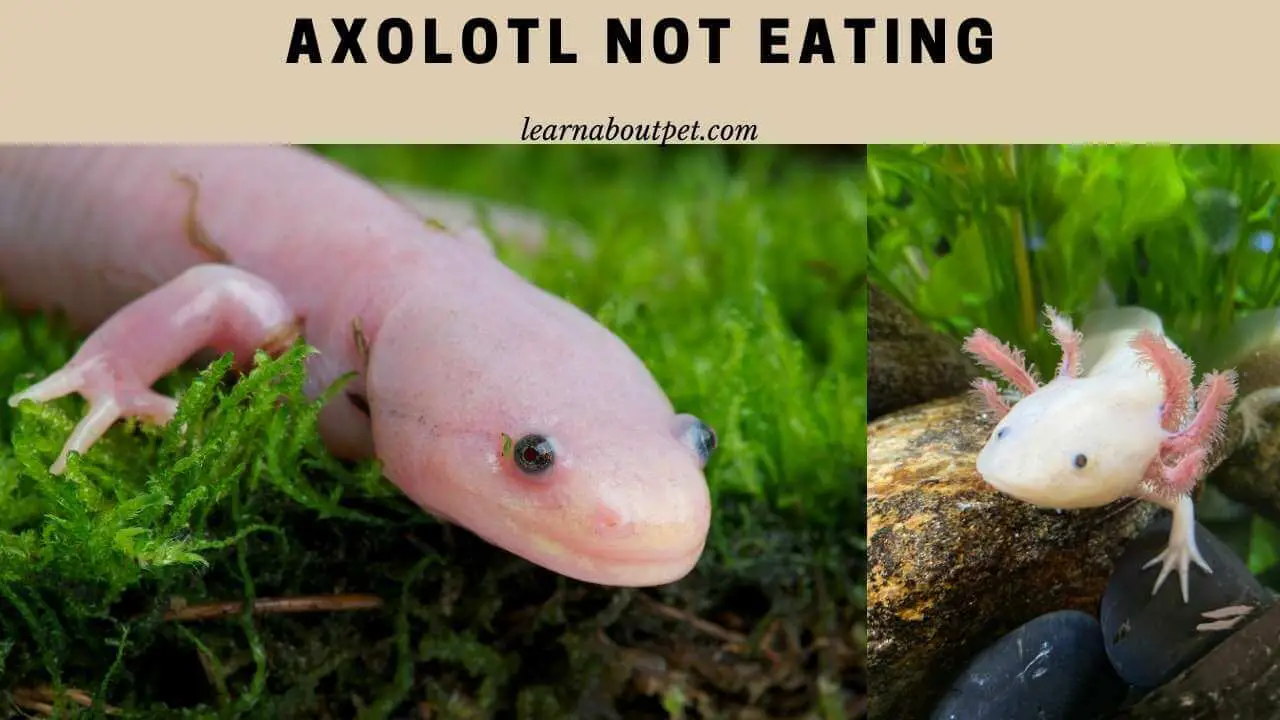
What Do I Do If My Axolotl Won’t Eat?
There are several things you can still do when dealing with Axolotl not eating. Pay attention to the portion of food you give the Axolotl. If it’s too big, the Axolotl may have a hard time eating the food.
Axolotls do not have strong teeth for tearing the food apart, and their teeth are only used to grasp their prey. Providing smaller sizes of food will help them to swallow food faster.
You can give axolotl pellets with sizes that are adjusted to their size and age. If the Axolotl wants to eat, then the problem lies in the food you give it.
But what if the Axolotl not eating skinny problem? Provide the Axolotl’s favorite foods, and increase live foods such as crustaceans or worms.
Axolotls prefer moving food because of their instincts as predators. If they are willing to eat worms or crustaceans, give it once or twice a day until the skinny problem is resolved.
How Long Can Axolotls Go Without Eating?
Many axolotl owners ask this when they want to travel for a long time. It depends on your daily Axolotl whether they have been fed enough or not.
Well-fed axolotls can survive without food for up to 3 weeks, and there is no bad long-term effect for them, as long as the tank temperature remains stable at cool temperatures.
How long can an axolotl go without eating? If your axolotls are still in the adaptation stage because they are new in your tank, then they can last more than three days without food.
Adult axolotls’ feeding time is every two to three days, so it’s still safe if you don’t feed them for four or five days.
If you see Axolotl not eating because they have eaten several days before, it is normal because their digestive system takes two to three days before their body can accept food again.
If something special happens, such as Axolotl not eating worms, look for other foods they want, such as daphnia, crustaceans, or pellets.
How Do You Force Feed An Axolotl?
Forcing feed is not recommended, but if you have an axolotl not eating problem and it persists, it will affect your immune system. One way to overcome this is to do force-feeding so that they want to eat again.
The first step is to give live food and make sure when the Axolotl sees it. Wait for the Axolotl to see the food you are given, and let them react to the moving food.
Axolotl not eating pellets because maybe they prefer live foods. Baby axolotls to juveniles prefer live foods until their senses become sharper as they develop, and only then can you feed dead prey or pellets.
Another step is to force enter the moist food through the syringe. Prepare a soft cloth, a partner who can help you, a syringe that has been washed with dechlorinated water. Hold the Axolotl and pry their mouth open gently with a plastic spoon or spatula.
Place the syringe into their mouth and slowly inject the food until it runs out. While waiting for the food from the syringe to be swallowed by the Axolotl, you pour water over the Axolotl’s head to prevent them from drying out and making it hard to breathe.
If the axolotl regurgitates, you should lift their chin and make sure all food is swallowed well. When you’re done, return the Axolotl to the tank.
How Often Should An Axolotl Be Fed?
Feeding axolotls should be tailored to their needs. Young axolotls have a higher diet than adult axolotls. Below is a table that makes it easier to see how many portions are right and the right time to feed axolotls according to their age.
| Life stages | Frequency |
| Hatchling | Twice per day |
| Baby | Twice per day |
| Juvenile | One per day |
| Sub-adult | Every other day |
| Adult | Every two – three days |
The variety of food that can be given is brine shrimp, bloodworms, blackworms, gel food, crustaceans, and pellets. If the Axolotl not eating worms, you can look for their favorite food. But give the worms the occasional protein requirement for them.
Watch their feeding times carefully. If your Axolotl not eating, there’s a good chance they’re still not hungry because it takes a few days before they eat again when they’re sub-adults or adults.
Why Is My Baby Axolotl Not Eating?
If you see a baby axolotl not eating, it may be because the food you chose is not suitable for them. Baby axolotls only want to eat live food and give it right in their face.
The size of the food given must adjust to the shape of the body so as not to overfeed. Because they need a lot of food for their body development, make sure you feed it at the right time.
If the baby axolotl is hungry, you will see Axolotl eating each other because, at that age, axolotls can still attack other axolotls and can eat other smaller axolotls.
If you are short on space to care for baby axolotls, it’s okay to put several baby axolotls in one tank, but make sure they get enough food.
Baby axolotls are also very sensitive to water conditions in the tank. If your baby axolotl not eating, check the water level to see if it’s dirty or if it has ammonia or nitrate levels that stress them out.
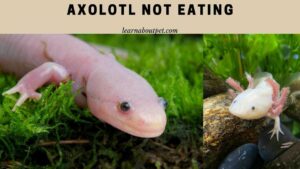
Juvenile Axolotl Not Eating
If there is a juvenile axolotl not eating, many factors make it possible. When they are babies, they may lose speed when you give food to baby axolotls in one tank, so the development of that Axolotl is slower than the others.
In addition to the condition of the water tank, this is also possible because the juvenile Axolotl still has a high appetite for food, just like the baby axolotl.
Axolotl won’t eat can also be due to stress. If the juvenile Axolotl lives with its tank mates and feels overcrowded, it will have less appetite or not eat at all.
If your Axolotl is juvenile, transfer it to another tank and let it live alone to calm them down. The Axolotl will have no problem staying alone in the tank for long periods.
New Axolotl Not Eating At Home
If you buy an axolotl and put it in a tank, the Axolotl will adapt to its new habitat. It will take about a week or so for them to get used to their new place.
My Axolotl isn’t eating until a few days later in their new tank until they want to eat the worms I give them as soon as they see them.
Axolotl not eating because they’re still not used to their new place, and they still feel threatened that they can memorize the new place. After that, the Axolotl must be enticing to eat so that his body condition recovers.
Axolotl Not Eating Or Pooping
If previously your Axolotl was fine and eating normally, then your Axolotl won’t eat anything. Something has happened to them. Check your Axolotl’s behavior, and if they are floating, then there is a possibility they are constipation or impaction.
One of the Axolotl not eating problems that can be fatal is constipation or impaction. If an axolotl is constipated, you can help them by not feeding until their digestive system functions normally.
Constipation keeps axolotls from pooping because they have a hard time digesting the large food they swallow.
If your Axolotl has an impaction, find a way to get the choking food out. If you are still having trouble, immediately take the Axolotl to the vet.
My Axolotl Has Stopped Eating – What Should I Do?
If your Axolotl hasn’t eaten in a month, while they can only survive without food for up to three weeks, you should look for possible problems with your Axolotl. If you continue in this condition, your Axolotl will become thinner and more susceptible to disease.
Why is my Axolotl not eating? It can happen because the air tank has not been replaced in a while, so the Axolotl is not comfortable in the tank. The filter in the tank is also dead, so the water in the tank is getting dirty because the Axolotl also produces a lot of waste.
Clean the tank and move your Axolotl to the temporary tank. Ensure you use dechlorinated water and clean the tank from the waste completely. After it feels like the tank is clean, try to give live foods in small sizes to entice them to eat.
If the Axolotl not eating even though the tank and water conditions are clean, you need to check the other behavior of your Axolotl. Is it because there are tank mates, or are they constipated or not hungry.
Why Is My Axolotl Not Moving?
Young axolotls mostly swim around, while adult axolotls mostly stay in the bottom of the tank. But if you ask why is my Axolotl not moving or floating, maybe because they get impaction after eating too large a meal or eating small fish with hard spines.
Axolotl not moving can be a serious thing because if they are given live foods but have no interest, you should consult a vet for this condition. After all, it is not normal.
Axolotl Skin Peeling
If your Axolotl not eating and their skin is peeling, then check the water in their tank. If there is chlorine or chloramine because you use tap water to fill the water in the tank, this will cause the axolotl skin to peel.
Axolotls won’t eat worms if the water conditions in their tanks are bad, and that can be a problem if you don’t notice until a few days later.
Axolotl Not Eating Minecraft
Not only in real life, but axolotls can also not eat in the Minecraft game. Why is my Axolotl not eating Minecraft? Axolotls will only eat tropical fish and don’t want to eat anything else.
Why is my Axolotl not eating Minecraft because they can’t eat anything other than tropical fish. You can look for tropical fish in groups of eight and don’t naturally spawn in frozen water.

Final Verdict On Axolotl Not Eating
Understanding the problems in your Axolotl is the main thing so that the Axolotl lives a healthy life according to its life expectancy.
One thing to worry about is axolotls who refuse to eat. You should know some things that make axolotls not want to eat, such as stress, poor water conditions, constipation, impaction, or they are just adapting to their habitat.
Immediately find the problem why your Axolotl doesn’t want to eat so you can solve it immediately. Axolotls can last up to three weeks if they have been fed regularly before, but that doesn’t mean you’re safe not to feed them that long.

Welcome to Learn About Pet. My name is Rajkumar Ravichandran and I love all pets, travel, and amazing food. I write about my passion and personal experience caring for multiple pets in this blog! ❤️
Post Disclaimer
DISCLAIMER: THIS BLOG OR WEBSITE, "Learn About Pet", DOES NOT PROVIDE YOU WITH MEDICAL ADVICE AND IS NOT A SUBSTITUTE FOR MEDICAL ADVICE. ALWAYS GET IN TOUCH WITH YOUR PERSONAL VETERINARIAN AND USE INFORMATION HERE AS GENERAL ADVICE.
The information, including but not limited to, text, graphics, images and other material contained on this website are for informational purposes only. No material on this site is intended to be a substitute for professional veterinary advice, food recommendation, diagnosis, or treatment. Always seek the advice of your veterinarian or other qualified health care provider with any questions you may have regarding a medical condition or for pet food related questions.
